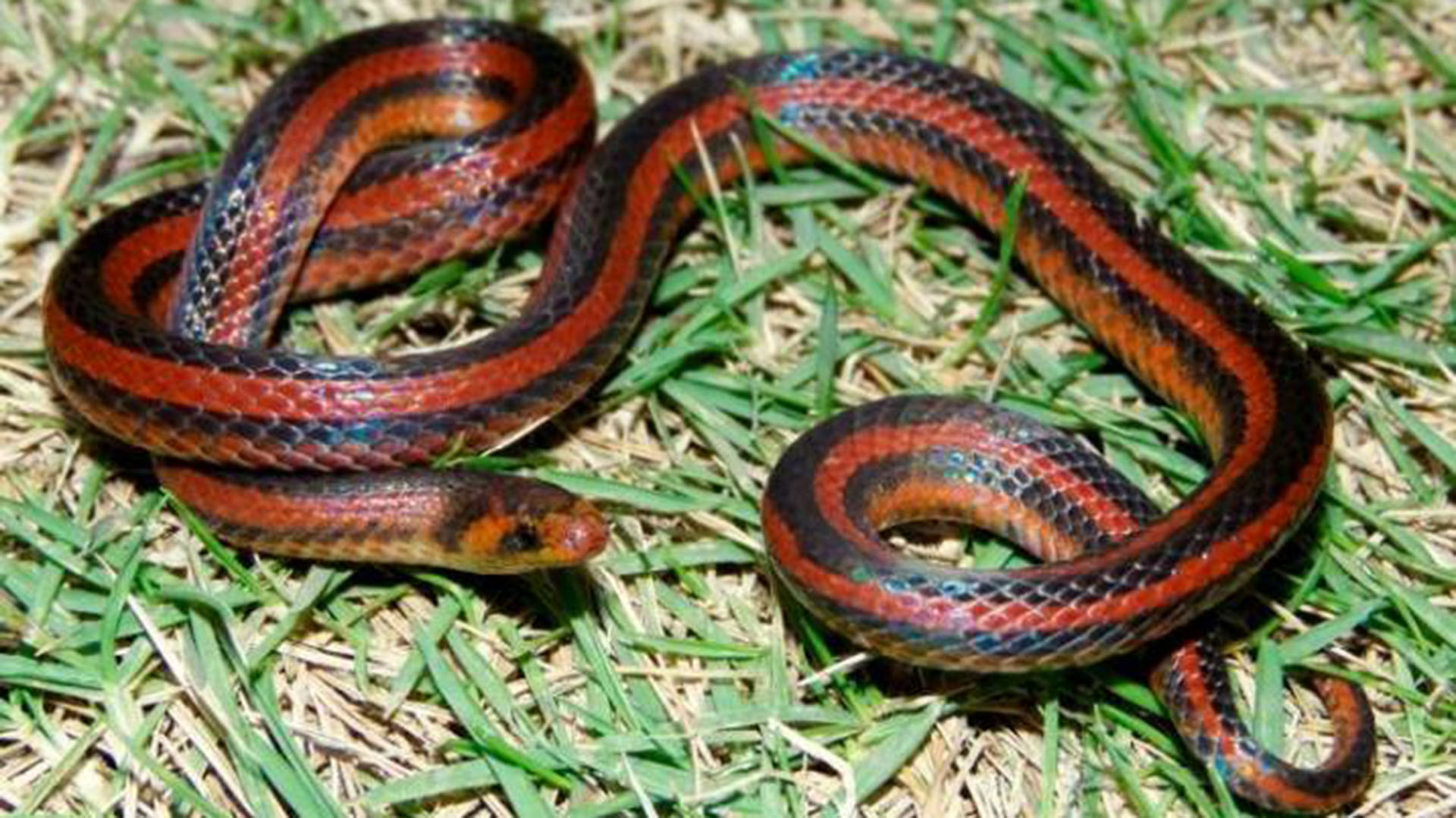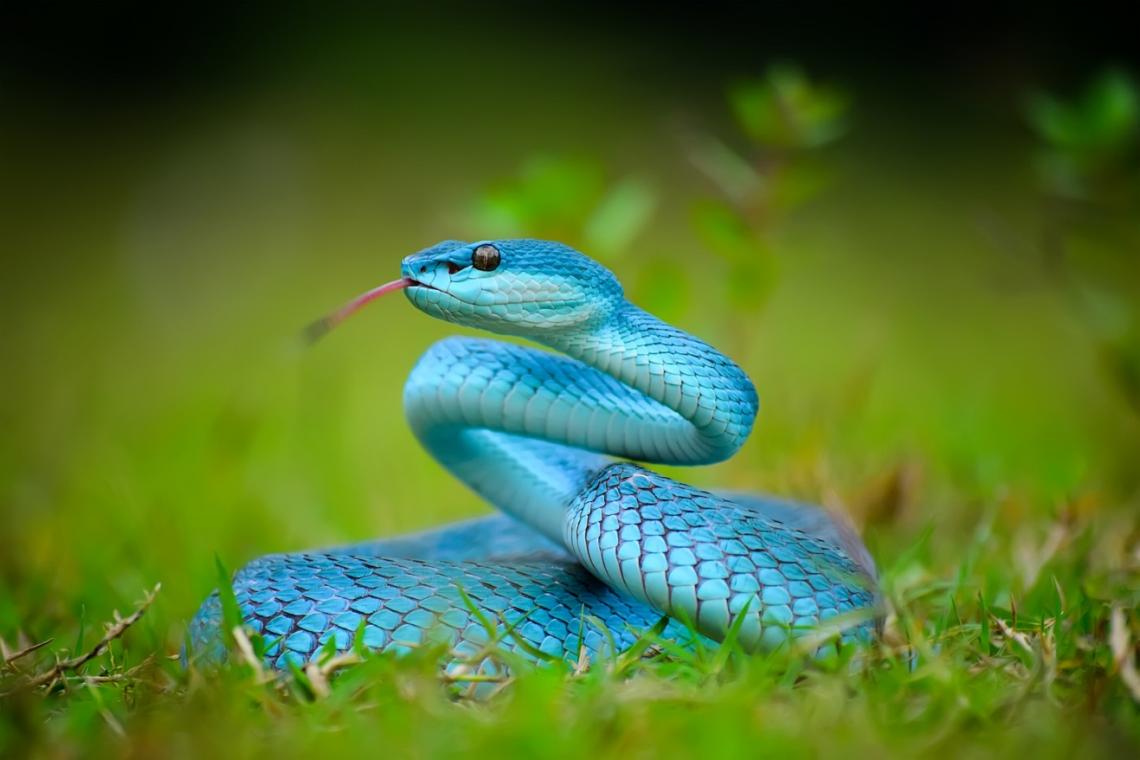Today people prefer to have more unusual pets, among them we can find snakes, which they have shared with us many times but are now more frequent in homes as pets. In this post we will teach you what snakes eat so that you can take care of yours.

What do snakes eat?
If you find yourself sharing your home with an snake, it is important that you inform yourself about its care and feeding. You should also study what are the precautions you should take into account when having one of these as pets. Since they will never be fully domesticated, this is why the most important point about them is to know their diet. Next we will tell you how they feed? and what do they feed on? The key point of all this is that all snakes are carnivorous and this is an irrefutable fact.
Classification according to their Type of Food
The first thing we should know when adopting a snake to live in their homes is their diet. There are various classifications of snakes and therefore their diet is different. The important thing and what needs to be clear is that all snakes are carnivorous. But according to the classification of snake, we must feed it with a variation of animals. That is why we are going to show you what each of them eats, we will divide them by group according to their diet:
Mammal and Bird Eaters
The vast majority of snakes that can be kept as pets are particularly from this group, which feed on mammals and birds. However, this classification will also depend on the size of the snakes, this factor will influence their diet. Some can eat rats and mice, others can eat guinea pigs, rabbits, chickens, quail, among other animals. These types of snakes almost always willingly accept their dead prey, or even accept pieces of meat and some special preparations.
As explained before, size is an important factor in their diet, which is why we decided to divide them into two subgroups. So that it becomes easier for them to identify which one their life partner belongs to and you can proceed with their feeding correctly:
Small Snakes and Grass Snakes
Those snakes or snakes that are considered small, are those that measure between 60 cm and 140 cm. Some of the best known snakes are those known as the king snake. Or as they are also known scientifically; Lampropeltis alterna, Lampropeltis mexicana, Lampropeltis pyromelana and Lampropeltis getula. Other snakes are those that are considered false corals, which are scientifically known as Lampropeltis triangulum and we also find corn snakes or rat traps.
Boas and Pythons
In this classification or group we can find the largest snakes, among them snakes with measures of approximately 8 meters are usually found. However, when they are in captivity they do not exceed 5 meters. Another characteristic of this type of snake is that they are constrictors, it should be noted that this group of snakes are the most sought after as life partners. The best known of this group, as they are known scientifically, are; the Python regius, the Python molurus and the Boa constrictor.
Saurian and Ophidian Eaters
In this group of snakes they are known to be Saurophagous, when we hear this word the vast majority of people do not understand. It is here where we ask ourselves what the snakes of this group eat, because when we talk about the saurophagous, we mean that they eat lizards and ophiophagous. I mean, they eat other snakes, if you read that right, they eat other snakes. Even though these types of snakes are not the ideal ones to keep as pets, there are some that you may be able to have and it is the Lampropeltis, which eats mice.
Insect and Arachnid Eaters
Those that belong to this classification are insectivorous, that is, what snakes of this type eat are insects and in some cases arachnids. Some of these insects are; small grasshoppers, crickets, cockroaches, fly larvae, among other insects. Despite being small-sized snakes, they are not recommended for those people who are just starting out in the world of these exotic pets. For this reason they are not recommended for beginners, since they need much more care than other snakes.
In addition, they are very difficult to obtain, since their commercialization is rare. The one that can mostly be found and is the most commercialized is the Opheodrys aestivus aestivus or northern rough green snake. These are the ones that are mostly found in homes that have this type of snake as a life partner.
fish eaters
In this group of snakes they are known to be ictivorous. That is, what snakes of this type eat are freshwater fish. It does not matter if said freshwater fish are found alive or dead. Some of these fish are; goldfish, carp, guppies and some small aquarium fish. These types of snakes are the easiest to maintain and care for, which is why they are the most recommended for beginners.
They are the easiest to handle and there is not much danger for those people who do not know anything about these exotic pets. So they are recommended to start with this type of snake. The most commercialized and common are the Thamnophis sirtalis, also known as the striped snake.
When to feed snakes
We must know that snakes are the animals that can last the longest without having eaten any food. But they do have to drink, that is, hydrate. Snakes can spend very long periods without eating anything and this does not affect their health at all. But if it is vital for them to hydrate. Therefore, special care must be taken regarding this point.
As already mentioned, as well as feeding, the frequency of its feeding will also be influenced by its size. Giving you some very general parameters. We can say that snakes that are less than 1 meter long, such as terrestrial snakes and insectivorous and piscivorous snakes, eat between 1 to 5 times a week.
Unlike the small pythons that will measure between 1 and 2 meters long, they will only eat once a week. As for pythons such as the Indian and Caribbean pythons or boas, which are between 1 and 2 meters long, they eat once every 6 to 2 weeks. This means that they only eat once or twice a month. On the other hand, those snakes that measure more than 4 meters, it should be noted that these are almost never found in captivity, they eat even less frequently. Although there are many exceptions regarding this type of snakes, but they have a high incidence rate.
These latter snakes tend to eat or ingest two or three times a year, but what snakes of this type eat are large animals. With this food they will be kept for a very long period and it is more than enough for them to be satisfied. We must have other factors of its nature and it is that according to several studies, snakes are more active in spring and summer. The opposite occurs during the winter and fall, where they are less active, therefore they eat less.
Another important factor during your feeding is the time. A schedule must be established for their feeding, in addition there is also the fact that they like and prefer to eat at sunset or in the evening. So it is very important to pay attention to these small details, but no less important.
How to feed snakes
First we must know if our snake has a specific way or way of eating. Since this is going to cause an impact on them at the time of their feeding. Those snakes that are removed from the wild and taken into captivity often reject dead prey. On very rare occasions they will get used to eating them, since they have a hunting instinct and therefore they will reject that dead prey. No matter how much you prepare to make your prey look alive, they will never accept it.
Unlike those snakes that are in captivity, that are born in captivity or that are commercialized, they do not have that hunting instinct as developed. So it can be easily used from small to dead prey. You can also eat traces of meat and some meat derivatives that can easily complement your diet. Keep in mind that those prey and pieces already prepared must remain frozen until the time comes to give it to your partner.
This will allow the food to be kept in excellent condition, thus avoiding giving our snake some food in poor condition, leading it to get sick. It should be noted that live or dead prey have more nutrients than pieces or prepared meals, so the first option is more recommended. Since the prey provide calcium, digestive enzymes, necessary bacteria, among other nutrients. In exchange, the prepared pieces will only provide the protein of the meat.
If it ever happens that you can only feed your snake chunks or ready-made meals, they should supplement their diet with nutritional supplements. Thus preventing your snake from getting sick, these supplements can be mixed between the prepared cubes or pieces or even sprinkled on meals. With all these tools that we have provided, we hope that you will identify what foods your snake eats, when and how according to its classification.
If you liked this article, I invite you to continue reading in the following other links, so that you can learn much more about fauna:


